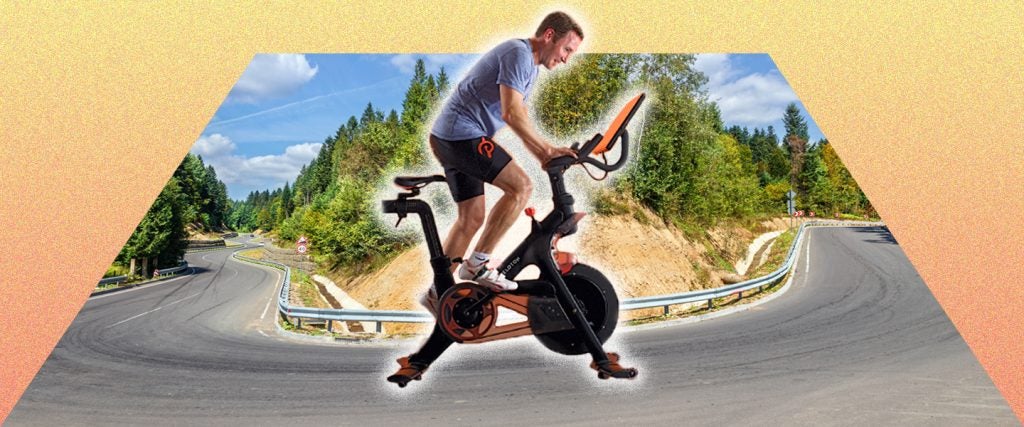One of the selling points of a Peloton is the diverse range of courses that you’re able to ride upon. The Scenic Rides feature is designed to give you the feeling that you’re either tackling different topographies alongside your instructors, or handling them alone. The Peloton system is preprogrammed with at least 60 different scenic course rides based on expected completion times of 10 minutes to one hour, and also at least a dozen distance courses that are either five kilometers or 10 kilometers in length.
So if you’re prone to getting bored and restless from staring at a set of numbers on an otherwise passive display screen — or from looking into a spin instructor’s grinning face while they’re barking orders at you — a Scenic Ride is gonna provide a nice change of (literal) scenery and (literal) pace.
I get that, but how much does it prepare me for taking such scenic rides in real life?
It goes without saying that there’s a lot more to approximating authentic street cycling than varying the resistance of a stationary spin bike — whether you’re turning its resistance knob or swiping up on a screen. Authentic terrain is totally unpredictable, and its grade can change from second-to-second. You must make instantaneous adjustments if you want to remain upright and pedaling, let alone moving forward.
It would help if the Scenic Rides feature had automatic resistance changes, but it doesn’t. Instead, the instructors call out suggested resistance cues, which you can make on your own. This distracts from much of the realism that would otherwise be present in a cycling simulator.
Also, during an ordinary climb, a bike physically oscillates back and forth, to the left and right whenever you elevate yourself off the seat and begin to pump. The Peloton, however, remains stable and upright. Not to mention, the riding of an authentic bike is far more technical, and involves actual steering of a vessel. All a Peloton requires is strict pumping of pedals at various intensities.
In short, without the Scenic Rides possessing the capability to automatically alter the resistance to match the terrain — or the option to rock back and forth to emulate the realistic weight shifting that occurs when you stand up while pedaling — a Peloton can’t come close to what you’d expect to encounter out on the open road.
How can I replicate that feeling at home?
Honestly, you can’t. No matter what you throw up on the monitor, a Peloton has as much to do with pedaling a real bike as a Concept2 Skierg has to do with real cross-country skiing. That’s not to say that the two things have absolutely nothing in common, but when swimsuit model Ashley Graham is able to beat Alpine skiing Olympic gold medalist Lindsey Vonn on a skierg, you know something is up.
Yes, I know Vonn does downhill skiing, but I also wouldn’t expect a non-swimmer to beat a synchronized swimmer in a straight-up race. And that’s what we’re talking about with a Peloton: When you remove all of the skill from cycling, you can make it look like absolutely anyone can be a cyclist just based on their superior conditioning. But again, there’s a lot more to it than that.
If you want to see just how prepared your Peloton adventures will make you for real cycling, buy a bike, get out on the open road and ride. Otherwise, all you’re doing is testing your cardiovascular capacity in a controlled environment, which is about as sufficient as Ivan Drago running up a steep treadmill incline and thinking it was equivalent to Rocky running up the side of an actual mountain. And we all saw what happened there.

